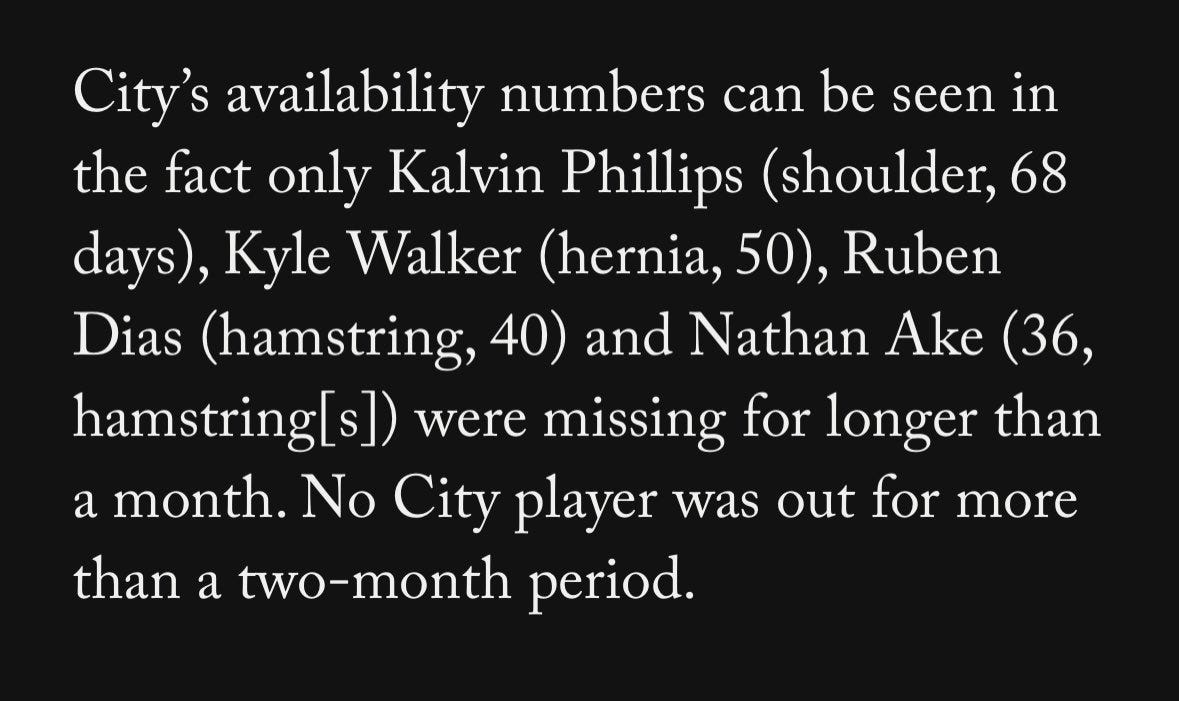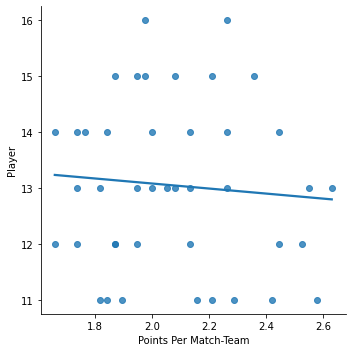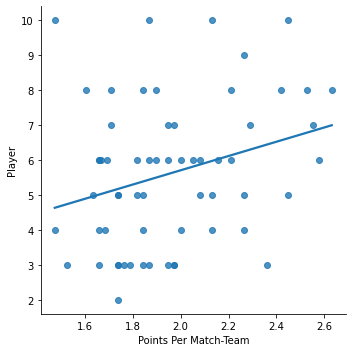How much do top teams rotate
A continuing look at the topic
This has been a bit of an ongoing windmill that I tilt at and well I am nothing if not overly persistent when ideas get into my head and I feel like there is a “narrative” developing that isn’t supported by the data.
That narrative is that Arsenal need to rotate more to be able to challenge the top teams.
I am not really sure I believe that and it feels like it is a bit of backward logic looking at Arsenal having stumbles at the end of the season that made it so they fell short of their goals. Absolutely injuries contributed to Arsenal having problems at the end of the season the last two seasons but I am not sure there is a clear line to say that it would not have happened with Arsenal had rotated more. Having better depth to deal with injuries, absolutely would have helped but that’s the same as just saying having better players means you have a better team, and that is obviously better than having a team with less good players.
So to get a sense of what sort of rotation other teams have done I have pulled the data from FBRef for all competitions for the teams that finished in first and second each season going back to 2014-2015. I picked the top two teams because that’s generally been the best teams, and that is where I think Arsenal are going to want to target again.
What I have seen from the data may surprise some but Arsenal were not outliers by any stretch of the imagination last season with how much they depended on their core of players.
Arsenal had 12 players play at least 40% of the available minutes in all competitions, that’s not far off the average of 13.6. At 55% of minutes Arsenal had 9 players compared to the average of 10.3, and at 70% Arsenal had a core of 7 players compared to the average of 5.8.
Arsenal had a bit less than 2 at the low end, 1 less at 55% and 1 more at the high end. It is even smaller of a gap excluding Manchester City who are a bit of an outlier in how much they are able to rotate given their ability to acquire elite talent; without City the averages compared to Arsenal are 12 vs 12.6, 9 vs 10.3, 7 vs 6.7. That’s pretty close to a match for what other teams have done.
One of the really interesting things is looking at some of the teams that have surprised or have had the benefit of going without Europe, the Leicester surprise team was able to get 70% from 10 players! Chelsea the following year matched that (also without Europe) with 10 players getting to 70%. The first Liverpool team that jumped up from 4th to a near record points total had 9 players, their title-winning team almost matched that with 8 players.
One of the things this helps illustrate is that what generally separates teams that finish in the top 2 and the top 4 is the ability to lean on a core group of players and the injury luck. That was perhaps one of the things that was able to propel Manchester City to the Trebble last season.

All of this taken into account, for Arsenal trying to build a strong core of players that they trust is important but the main focus should absolutely be on creating a first eleven that is good enough to go up against anyone (which I think they have done) and that has a good track record of availability so that they can withstand the rigors of playing 40-50 matches a season.
I am pretty confident in what Arsenal have done this season and I think looking at the squad they have a very good group of 13-14 players that are capable of playing the needed minutes and they should hope for good injury luck for the key players.
*** Edit July 17, 2023:
I had a few more things that I looked up over the weekend (like I will readily admit, it is easy for me to end up obsessed on things and really dig in) and I thought would be good to add.
I expanded the sample to include all Premier League teams (League only) to see if perhaps only looking at the top teams was hiding some relationship where more rotation got you more points.
Here is a quick summary of things starting with 1400+ minutes which is roughly 40% of minutes played and a solid proxy of a player that got solid rotation minutes for a team.
There is a slight positive correlation where a bit more rotation seems positive but with a very weak explanatory value. Most teams are bunched in the 11-13 player range.

At the level of teams for top 6, that relationship is even less pronounced with it being close to random.
Looking at the top 4, the relationship turns negative (but again with very little obvious correlation).
Next looking at the 2500+ minute threshold, this is just under 75% of minutes played and is a good approximation for a player that played a lot and was clearly a key player. Starting with the Premier League as a whole.
The relationship here looks a little more obvious but still noisy. Most teams are between 4-6 players playing 2500+ minutes but with generally more players going with positive results. It would be really interesting to see how this compares to how a team was expected to perform at the start of the year but I don’t have that data handy.
At the top 6 level it is similar but again probably a bit messy because we can’t see how this compares to expectations for performance.
I think my takeaway from all of this remains, a team should look to get as much talent on the field as possible. Sometimes that means that a fresher player should play ahead of a starter who might be carrying a knock or is tired. This doesn’t suggest that there is a magic level of rotation that a team should aim for, but rather that really trying to maximize a team’s best players is generally a good strategy.








Think about this. Before the trade window opened if we recruit so that 15 people get 40% of the minutes, that could be resting Saka, Partey, and White to have them mentally sharp and reducing the chances of carrying a niggle into the runout.
I love the way you've managed to shift the conversation away from lazy takes with these stats and explanation.
Less rotation is...less important than the players who come in when rotation does happen being better. Kiwior or Timber as fill-in rather than Holding might win the title. Having better options off the bench might win the title. Etc.
With all that said, the gap from 12 to 13.6 is huge in the grand scheme of things, in my opinion. Having just two more "trusted" players compared to last season could be the difference maker!